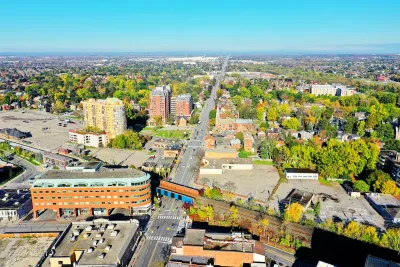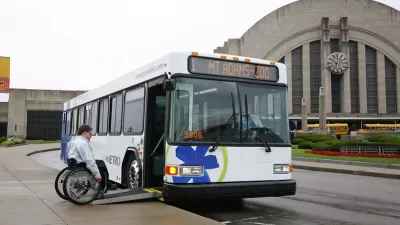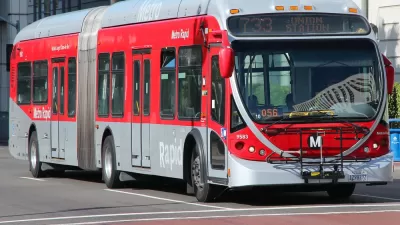Brampton, Ontario used gradual improvements in service to prove that if you build it, they will ride.

When you think of high public transit ridership, suburbs don’t often come to mind. But Brampton, Ontario — a suburb of Toronto — turns this on its head. The town, with a population of 700,000, sees roughly 226,500 bus riders on an average weekday.
As Jonathan English explains in Bloomberg CityLab, Brampton proves that “even in a place without any of the supposed prerequisites, you can still get tens of thousands of people to choose to ride the bus.”
The industrial city is laid out like many North American suburbs, with sprawling warehouses, wide multilane roads, and little pedestrian infrastructure to make walking appealing. So what makes transit more appealing here? “Quite simply, Brampton provides service that is good enough to make getting around by transit reasonable for people who have other transportation options — a group that transit agencies often dub ‘choice riders’ — as well as for people with no other choice.”
Brampton’s bus routes run as often as every five minutes and offer some night service, making the system much more practical for residents. “High frequency also makes transfers feasible, meaning that people can make anywhere-to-anywhere journeys rather than being constrained to going to wherever their local bus happens to go.”
The system improved service gradually, leading to a steady growth in ridership that helped offset the costs of additional service. According to English, Brampton Transit demonstrates a version of ‘induced demand’ for transit: “If you provide a more attractive service, more people will use it.”
FULL STORY: How Did This Suburb Figure Out Mass Transit?

Alabama: Trump Terminates Settlements for Black Communities Harmed By Raw Sewage
Trump deemed the landmark civil rights agreement “illegal DEI and environmental justice policy.”

Study: Maui’s Plan to Convert Vacation Rentals to Long-Term Housing Could Cause Nearly $1 Billion Economic Loss
The plan would reduce visitor accommodation by 25% resulting in 1,900 jobs lost.

Planetizen Federal Action Tracker
A weekly monitor of how Trump’s orders and actions are impacting planners and planning in America.

Wind Energy on the Rise Despite Federal Policy Reversal
The Trump administration is revoking federal support for renewable energy, but demand for new projects continues unabated.

Passengers Flock to Caltrain After Electrification
The new electric trains are running faster and more reliably, leading to strong ridership growth on the Bay Area rail system.

Texas Churches Rally Behind ‘Yes in God’s Back Yard’ Legislation
Religious leaders want the state to reduce zoning regulations to streamline leasing church-owned land to housing developers.
Urban Design for Planners 1: Software Tools
This six-course series explores essential urban design concepts using open source software and equips planners with the tools they need to participate fully in the urban design process.
Planning for Universal Design
Learn the tools for implementing Universal Design in planning regulations.
Caltrans
Smith Gee Studio
Institute for Housing and Urban Development Studies (IHS)
City of Grandview
Harvard GSD Executive Education
Toledo-Lucas County Plan Commissions
Salt Lake City
NYU Wagner Graduate School of Public Service





























